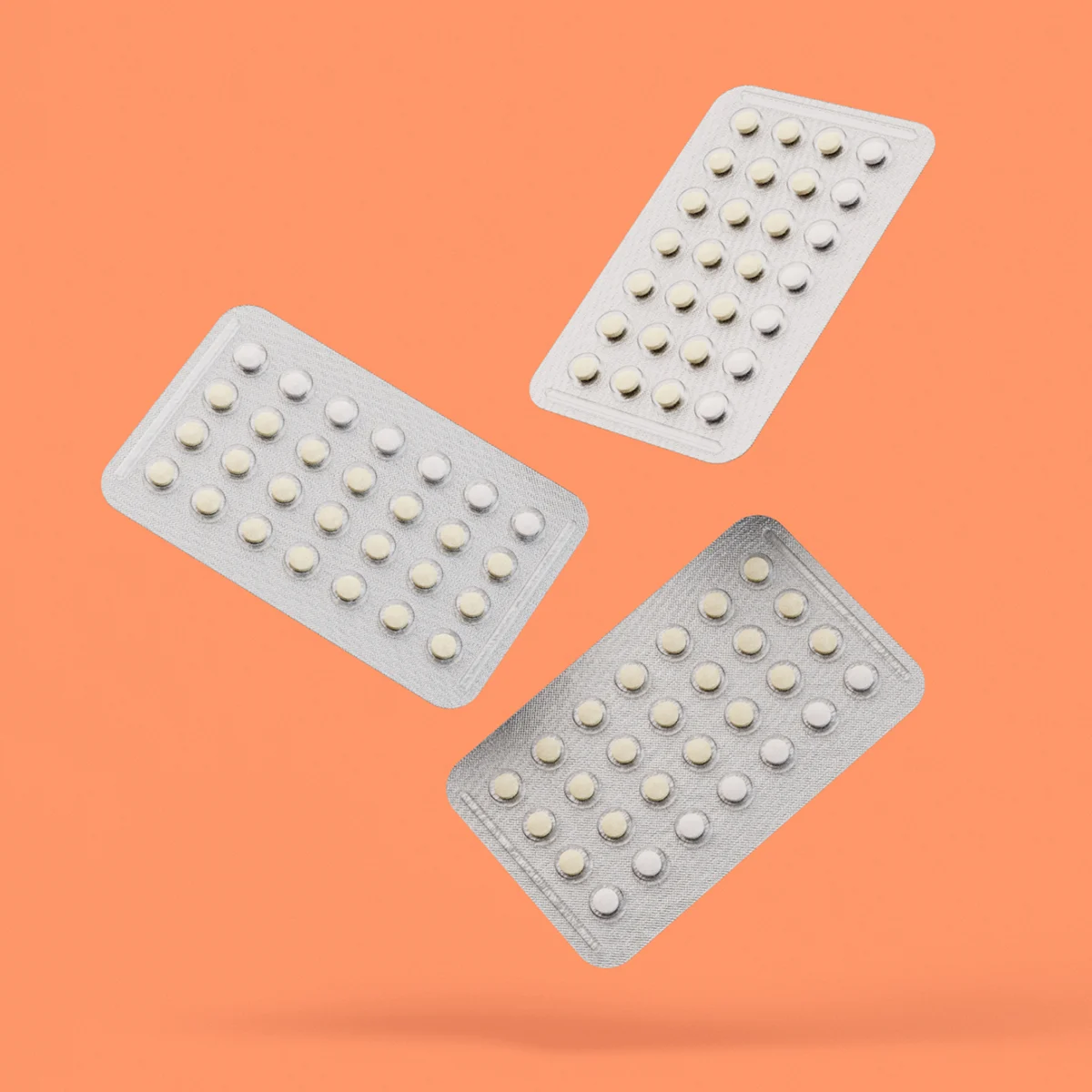How long does birth control take to work?

Reviewed by Yael Cooperman, MD, Ro,
Written by Danielle Oaks
last updated: May 26, 2021
5 min read
Here's what we'll cover
It can take up to seven days for birth control to start working. Some types start working faster than others, like progestin-only pills and copper IUDs. Because birth control doesn’t immediately protect against pregnancy, it’s best to use a backup birth control method unless you start it at the same time your period begins.
Why does birth control take time to work?
Hormonal birth control methods work in a few different ways. One includes changing the mucus in your cervix so it better blocks sperm and tweaking your menstrual cycle. It takes several days for these hormones to start affecting your cycle.
Menstruation begins when bleeding starts—the first day of your period. It lasts about a week, but your actual menstrual cycle continues until you begin bleeding again next month. In the middle of this cycle, there’s a window of fertility when you’re more likely to become pregnant if you have unprotected sex (Reed, 2018).
If you start taking hormonal birth control well before this fertile window begins (when you’re still having menstrual bleeding or very soon after), you’re less likely to need to use backup contraception.
How does birth control work?
Most hormonal birth control methods work by making the mucus in your cervix thicker, so sperm has difficulty reaching eggs to fertilize them.
Many methods also prevent the ovaries from releasing an egg each month, a process called ovulation. These changes aren’t immediate and can take up to a week to take effect (Bansode, 2020).
For any non-barrier birth control, you’ll need to use a backup method to prevent pregnancy, like a condom, for up to seven days after starting birth control.
How long does it take each type of birth control to work?
Some types of birth control start working almost immediately, like the copper IUD. Others can take up to a week to take effect.
If you have irregular periods, have recently been pregnant, or have switched from one birth control method to another, talk to a healthcare provider. These are a few factors that may affect how fast birth control starts workin (CDC, 2016).
Birth control pills
There are two types of birth control pills: progestin-only pills, which contain a synthetic version of the reproductive hormone progesterone, and pills with a combination of progestin and the hormone estrogen. Progestin-only pills are enough to prevent pregnancy and are useful if you can’t take estrogen due to breastfeeding or a high risk of blood clots. Estrogen is added to combination pills to make your period more regular and predictable (Bansode, 2020).
Combination pills: These have both estrogen and progestin. They come in a pack and are taken daily. If you start this pill within five days of bleeding, you don’t need backup contraception. If you start more than five days following bleeding, use a backup method for the week (CDC, 2016).
Progestin-only pills: Also called minipills, progestin-only pills don’t have estrogen. If you begin this pill within five days of when period bleeding starts, you don’t need backup birth control. If you start more than five days after bleeding starts, make sure to use backup protection for the next two days (CDC, 2016).
Long-acting reversible contraceptives
Known as LARCs for short, long-acting reversible contraceptives are among the most effective forms of birth control. Because LARCs don’t require any daily action, like taking a pill, they can’t be beat in terms of ease of use.
Copper intrauterine device (IUD): An IUD is a device that's inserted through the cervix into the uterus to prevent pregnancy. The copper creates an environment that sperm can’t survive in and changes the lining of your uterus, preventing implantation even if sperm do manage to make it to an egg. No additional protection is needed after an IUD is placed to prevent pregnancy but they do not prevent sexually transmitted infections. IUDs can also be used as emergency contraception if inserted within five days of having unprotected sex but do not prevent sexually transmitted infections (CDC, 2016).
Hormonal IUD: These are similar to the copper IUDs, but instead of copper, they contain progesterone, which prevents sperm from meeting and fertilizing an egg. If a hormonal IUD is inserted within seven days after bleeding starts, backup contraception isn’t necessary. If implanted more than seven days after bleeding starts, use a backup method for the next week (CDC, 2016).
Arm implant: This device is inserted under the skin of your upper arm, and it can prevent pregnancy for up to five years. The hormones in an arm implant prevent pregnancy by changing the consistency of cervical mucus, preventing ovulation each month. If inserted within five days of when bleeding starts, you don’t need backup contraception. If you have it inserted more than five days after bleeding starts, use backup protection for the next seven days (CDC, 2016).
Other hormonal birth control options
The shot (brand name Depo-Provera): This type of birth control comes as an injection you get once every three months. When you get the shot, you don't need to use other birth control––if you get it within seven days of menstruation. Any more than seven days, and you’ll need to use a backup for the following week (CDC, 2016).
The patch and the ring: These birth control options deliver both estrogen and progestin. The patch you wear on your skin and the ring is a flexible device you insert into your vagina and replace every few weeks. If you start either option within five days of when bleeding begins, you don’t need backup birth control. Past five days following the start of bleeding, it's a good idea to use a backup for the next seven days (CDC, 2016).
What about birth control for other uses?
Besides pregnancy prevention, birth control is also used to treat acne, heavy periods, and reproductive conditions like endometriosis and polycystic ovary syndrome (PCOS) (Bansode, 2020).
If you’re taking birth control for any other conditions, talk to a healthcare provider about when you can expect it to start working for those indications.
How long does birth control stay in your system if you stop taking it?
There may come a time when you want to go off birth control.
The good news is that all the types of birth control we covered are reversible and won’t affect your ability to get pregnant in the future.
When it stops working depends on the type of birth control you were using. Most people trying to get pregnant after stopping birth control can get pregnant within one year (Girum, 2018). The hormonal IUD is still being studied to see if it has an effect on fertility that lasts a year or more (Dinehart, 2019).
Do I need to use a backup while taking birth control?
Backup contraception means using a form of non-hormonal contraception like condoms even after starting hormonal birth control. This extra step can protect you from getting pregnant until hormonal birth control is fully effective.
It’s one more thing to think about, but using a backup method has the added benefit of protecting against sexually transmitted infections (STIs), which hormonal birth control doesn’t (Workowski, 2015).
Even after your birth control is fully effective, you may have to reach for backup. For example, if you’ve experienced vomiting or diarrhea, it can affect your body’s ability to absorb the medication (CDC, 2016).
How long your birth control takes to work depends on what kind you’re using. Some hormonal birth control methods can take up to seven days to start working—like hormonal IUDs, combination pills, and the arm implant—depending on when in your cycle you start them. Others start working faster—within two days, like the copper IUD and progestin-only pills.
DISCLAIMER
If you have any medical questions or concerns, please talk to your healthcare provider. The articles on Health Guide are underpinned by peer-reviewed research and information drawn from medical societies and governmental agencies. However, they are not a substitute for professional medical advice, diagnosis, or treatment.
Bansode O. M., Sarao M. S., Cooper D. B. (2020, July 27). Contraception. StatPearls Publishing. https://www.ncbi.nlm.nih.gov/books/NBK536949/
Centers for Disease Control and Prevention (2016, July 29). US Selected Practice Recommendations (US SPR) for Contraceptive Use, 2016. https://www.cdc.gov/mmwr/volumes/65/rr/pdfs/rr6504.pdf
Dinehart, E., Lathi, R. B., & Aghajanova, L. (2019, November 11). Levonorgestrel IUD: is there a long-lasting effect on return to fertility? Journal of Assisted Reproduction and Genetics, 37 (1), 45–52. DOI: 10.1007/s10815-019-01624-5. Retrieved from https://pubmed.ncbi.nlm.nih.gov/31709489/
Girum, T., & Wasie, A. (2018, July 23). Return of fertility after discontinuation of contraception: a systematic review and meta-analysis. Contraception and Reproductive Medicine , 3, 9. DOI: 10.1186/s40834-018-0064-y. Retrieved from https://pubmed.ncbi.nlm.nih.gov/30062044/
Reed B. G., Carr B. R. (2018, August 5). The Normal Menstrual Cycle and the Control of Ovulation. Endotext. https://www.ncbi.nlm.nih.gov/books/NBK279054/
Workowski, K. A., Bolan, G. A., Centers for Disease Control and Prevention (2015). Sexually transmitted diseases treatment guidelines, 2015. Morbidity and mortality weekly report. Recommendations and Reports , 64(RR-03), 1–137. https://www.ncbi.nlm.nih.gov/pmc/articles/PMC5885289/










